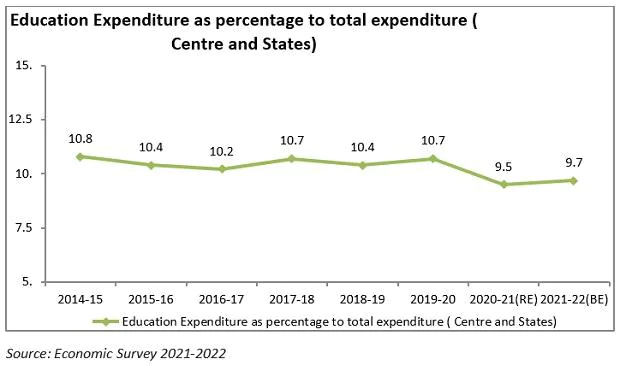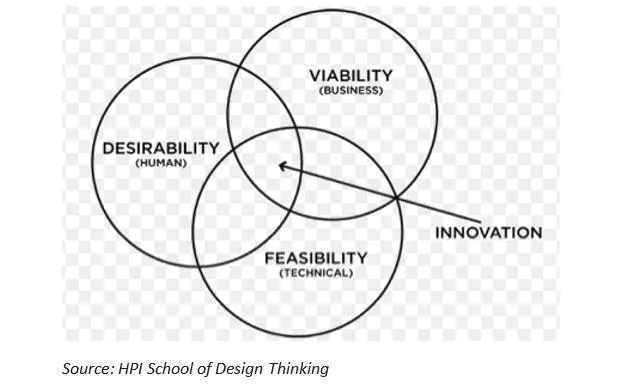Covid pandemic impact: When technology marries school education
When the pandemic disrupted existing practices of imparting education and forced the world to rethink its medium of instruction, technology was the saving grace. Reliance on technology in the post-pandemic era has made education increasingly mobile, creating an opportunity to make quality school education accessible in the country’s most remote areas. Technological integration is poised as a critical catalyst in the field of education. The world has recognised that technology will inevitably be crucial to education for all. Countries worldwide have been developing national-level schemes to promote ICT usage, which World Bank and UNESCO have also recognised. Most developed and developing countries are trying to leverage technology to address their country's challenges. National Education Policy (NEP) 2020 has emphasised that technology will play an essential role in improving educational outcomes, and the relationship between technology and education is bidirectional1.
Under the Digital India initiative, the government has taken extensive steps to boost digital education activities. Few of the ICT initiatives for school education are: PM eVIDYA Programme2 – it unifies efforts related to digital/online education so as to enable multi-modal access to education, with 12 eVidya TV channels, based on the line of One Class-One Channel for class 1 to 12; National Digital Educational Architecture (NDEAR)3 – a digital platform to support activities related to education planning; DIKSHA4 – a platform offering school curriculum-based learning materials; ePathshala Portal5 – a portal that acts as a storehouse of audios, videos, epubs, flipbooks etc.; NISHTHA6 – an integrated teacher training programme, widespread use of radio and podcast; QR codes in textbooks. etc. As per the Union Budget 2022-237, PM eVIDYA will be expanded from 12 to 200 TV channels so as to enable all states to provide supplementary education in regional languages, for classes 1-12. 750 virtual labs in science and mathematics will be setup to promote crucial critical thinking skills, and quality e-content will be developed to empower and equip teachers with digital tools of teaching and to facilitate better learning outcomes.
Outcome-based solutions should be implemented for school education to achieve the twin objective of enabling access to quality education and improving learning outcomes. The solutions should address the challenges of implementing and scaling technology solutions in the country. Some of the challenges related to technology solutions in education are the lack of digital access for both digital devices, and the internet. As per ASER 2021 report8, 68% of private and government schools students have access to smartphones. Low digital literacy of teachers, support staff and parents is another bottleneck to leveraging technology. Computers are available in schools, but no one knows how to operate and use them. The digital content is not available in vernacular languages, and it is not always aligned with the school curriculum. As per the economic survey 2021-20229, education expenditure as a percentage of GDP and as a percentage of total expenditure has remained constant for the last few years. Technology platforms with high implementation costs may not be adopted or scaled up by the state governments. Technology can’t replace the teacher in the classroom. According to Kentaro Toyamak10, a computer scientist and an international development researcher, "The key challenge in education remains the long-term, directed motivation of the student – something which no technology today can deliver on its own, but which good teachers deliver regularly". Therefore, interventions should not intend to replace teachers in the classrooms.
Moreover, hybrid learning is not just studying online and in school interchangeably but more precisely it is about having a clear demarkation of roles that technology and teachers will play. According to psychologist Benjamin Bloom, HTHT (High Tech- High Touch) model should be adopted where the most basic, least abstract levels of taxonomy such as remembering and understanding can be addressed by the use of technology whereas creating, collaborating, analysing and evaluating can be handled by trained teachers.

Technology innovation exists at a sweet spot between feasibility, viability and desirability11. Technology solutions should have business viability and desirability from the end-user and technical feasibility for mass adoption. One approach can be to shortlist technology solution after evaluating it through these three lenses.

Based on the challenges of implementing and scaling technology solutions for school education, in this article, an attempt has been made to leverage the following mentioned technology interventions. These interventions are aimed at achieving the twin goal of enabling access to quality education and improving learning outcomes. The objective is to clearly bring out scalable, sustainable, cost-effective, and easily adaptable tech-based solutions in the education space:
Smart Classroom
Smart Classroom is a mechanism for combining traditional classroom teaching with digital learning. It can be implemented by installing a digital screen, or a Smart TV or a projector, thereby playing digital content in the classroom. The ‘blending’ of the conventional teaching methodology and modern-day technology creates an efficient learning environment. Course content can be made available either live or via recorded lecture videos delivered to teachers beforehand, which are then telecasted in front of larger groups of students on school premises on a daily basis. Digital content will help teachers introduce effective and innovative pedagogy methods and use technology as a tool. Complex concepts can be explained to students by curating interactive digital videos. Engaging videos, and videos of eminent personalities for motivation can be collected and played during the class to make the classroom sessions more exciting and attractive for the students. A smart classroom is an efficient12 and cost-effective intervention based on various research studies. According to the India Report on Digital Education by the Ministry of Education13, in Bihar, 3,304 schools have been provided with Smart TVs in one classroom under the Unnayan Bihar14 Initiative. Inverters were also installed under the Unnayan Bihar initiative to provide power backup for Smart TVs. The invention enabled the provision of uninterrupted electricity to support technology. Uttar Pradesh, through CSIR Funds, provided 2,487 Smart TVs in schools.
The Unnayan Bihar model can be replicated and scaled up by other state governments. The hardware procurement for the smart classrooms at scale will bring down the cost. NCERT and SCERT can work on designing and developing videos in vernacular languages, with a duration of less than 10 minutes. There should also be a functionality to play content from the DIKSHA portal in a smart classroom. Alternatively digital content can be shared with schools via pendrives, and can be played in the classroom on a digital screen. It will address the challenge of unavailability of internet in schools. Digital Infrastructure in schools will not replace the teacher but will act as a supportive tool for the teacher. It will enable access to quality education at a minimal cost, and will help overcome other hindrances, including the unavailability of specialised teachers for all subjects. Teachers teaching outside their area of expertise can take support of digital content to explain complex topics. The intervention will be impactful if proper training is given, regarding the usage of available gadgets. Teachers should be given adequate training on the digital content with clear directions on when it should be played in the classroom, how to operate the smart TV and how DISKHA content can be broadcasted. Professional development of teachers, and support is essential with the changing role of the teacher in the blended world. Online training curriculum can be curated on NISHTA for teacher training. Online training should be further leveraged to upskill teachers and enhance the digital literacy of teachers and administrative staff. Teachers should be comfortable using multiple technology tools (Smart TV, DIKSKA, ePathshala) available to them, and should be able to include them in the teaching pedagogy. Best practices and case studies of teaching, translating online learning and transforming it into a digital classroom should be documented and shared with other teachers.
Technology initiatives to facilitate early childhood care and education (ECCE): Studies have indicated that 85% of brain development occurs before the age of 6, and meaningful differences in performance, between socio-economically advantaged and disadvantaged children, show up as early as nine months old. This was also highlighted as a critical concern in the NEP 2020. Technology can be used as a guide by teachers, parents and guardians to impart education. Digital content including A/Vs and parenting cards on early childhood education can be shared with Anganwadi workers (AWW) on their mobiles. AWWs can leverage digital content for organizing various activities. Such content will be used as a tool by AWWs for conducting innovative activities and enabling ‘Learn with playing.’
Secondly, in line with NEP 2020, through the participation of parents in their child’s development and providing guidance to them, the Nudges can be developed to bring behaviour change. For example, an automated phone call can be made to parents/guardians every day. The call nudges parents/guardians to follow a routine with their children. It includes them in activities that would holistically develop their cognitive ability, math skills, resilience building, responsive parenting tips, and play-based activities. The program expects to build awareness amongst parents about their child’s development, especially between the age of 3-6 years. Parents would spend more time with their children and try to create a stress-free environment. A positive parenting behaviour would be enforced that would help in the child’s development.
These nudges have been implemented by Dost Education15, a tech non-profit that promotes early childhood development, in Delhi. It is a very economical intervention that can be adopted by other state governments with the content of the automated phone call in regional languages. The intervention requires no internet or data for making the phone call. With the access to voice call network, the initiative can be scaled with the existing infrastructure.
Virtual Community of Career Counsellors and sexual health experts
A virtual community of specialists like career counsellors, sexual health experts and other sector experts can be constituted, and technology can be leveraged to connect these experts to students. It is always demanding to hire specialised experts, in schools located in remote locations. Instead of each school hiring experts, they can form a virtual cluster and onboard specialists. These experts can provide education to all member-schools of the cluster. The experts can be physically available in one school and connect with students at other schools through technology platforms. Forming school clusters will enable schools to share services of specialised experts and bring down the cost for schools.
In Jharkhand16, career guidance sessions were organised on YouTube and Zoom app for the students. Online Webinars on career planning and exam preparedness were also conducted. Similarly, online sessions can be conducted for sexual health education, health and hygiene issues, etc. Technology can also help in overcoming the challenge of isolation for teachers and students.
OUR VOIX17, a non-profit, has developed comic books and animated movies on sexual health education. Animated videos generate interest among students and simplify complex topics. Digital content can also be used to disseminate information regarding sensitive issues in language which students understand.
Personalised and Adaptive Learning for Students
Different students have different learning abilities. With high-strength classes, teachers often have difficulty providing personal attention to each student and identifying their weak spots and learning styles. Recognising a student’s learning style and then translating it into teaching will lead to the personalisation of learning for the students. However, just the personalisation of learning in classrooms will not be sufficient. Leveraging technology to its fullest potential in education, creating a Learning Management System that includes Adaptive Learning would help achieve the desired target.
The DIGITAL INFRASTRUCTURE FOR SCHOOL EDUCATION (DIKSHA) platform developed by the Ministry of Education has the necessary building blocks to develop online courses, energised textbooks, questions bank tools and others. It caters to all the persona in the ecosystem and is supported in 30 languages.
DIKSHA being an open-source platform, can be further enhanced by integrating the Learning Management Personalised eLearning services on the platform. While registering on the DIKSHA platform, students would be asked to fill out a questionnaire, which would help in identifying the student’s learning styles. It may also administer a pre-test before the course's commencement to assess the student’s knowledge level. The pre-test will also be used to segregate students into three groups: Beginner, Intermediate and Advanced. The metadata of the students will be stored in the database and will be accessed by the expert system. A customised learning path would then be designed for the students, basis their level of understanding, learning style and pace.
The Indian Education system can be comprehensively transformed through the above-mentioned appropriate applications of ICT to enable access to quality education and to improve learning outcomes.
Saurabh Thukral is a Senior Specialist at NITI Aayog. Views expressed are personal.
Reference
1.https://www.education.gov.in/sites/upload_files/mhrd/files/NEP_Final_English_0.pdf
2.https://pmevidya.education.gov.in/
3.https://www.ndear.gov.in/
4.https://diksha.gov.in/
5.https://epathshala.nic.in/
6.https://itpd.ncert.gov.in/
7.https://www.indiabudget.gov.in/doc/budget_speech.pdf
8.http://img.asercentre.org/docs/aser2021forweb.pdf
9.https://www.indiabudget.gov.in/economicsurvey/doc/eschapter/echap10.pdf
10.http://edutechdebate.org/ict-in-schools/there-are-no-technology-shortcuts-to-good-education/
11.https://hpi.de/fileadmin/user_upload/fachgebiete/meinel/papers/Book_Chapters/Front_Matter_-_Design_Thinking_Understand__Improve__Apply.pdf
12.http://www.sciencedirect.com/science/article/pii/S0305750X19303857
13.https://www.education.gov.in/sites/upload_files/mhrd/files/irde_21.pdf
14.http://unnayan.co.in/portal/
15.https://www.dosteducation.com/
16.https://www.education.gov.in/sites/upload_files/mhrd/files/irde_21.pdf
17.http://www.ourvoix.com/








Gloss